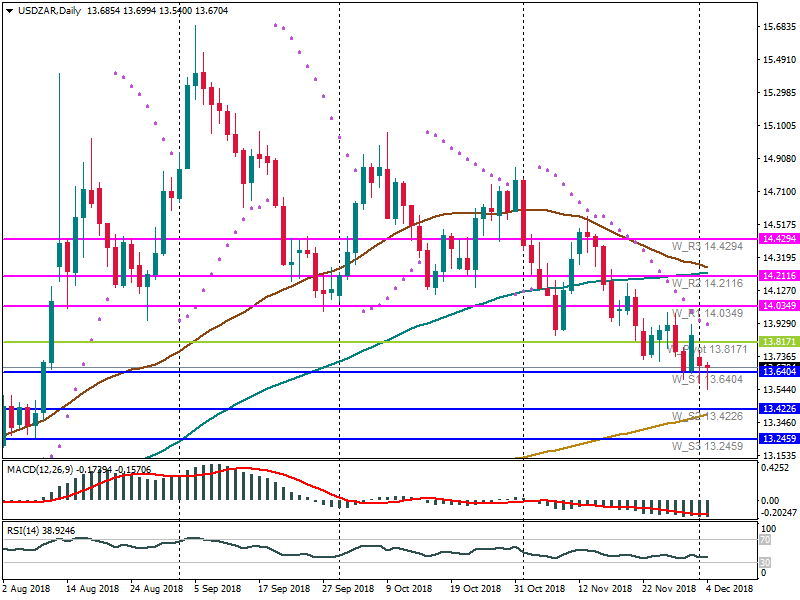USD/ZAR: the downtrend continues
On November 22, the South African Reserve bank (SARB) made an unexpected decision and raised its interest rate to 6.75% for the first time in almost three years. The decision was welcomed not by everyone, as the South African economic growth came to the near-recessionary stage. What are the motives behind this decision and how does it affect the South African rand?
The recent rate hike by the SARB does not go along with its negative revision of the inflation and GDP growth forecasts. The monetary policy statement by the central bank contained a revised CPI forecast from 4.8% to 4.7% in 2018 and from 5.7% to 5.5% in 2019. In addition, the forecast of the country’s economic growth was lowered from 0.7% to 0.6% in 2018. The forecast of output gap by the SARB was revised from -1.3% to -1.4% in 2018 and from -0.8% to -0.9% in 2019.
At the same time, there is policy uncertainty around the amendment of the country’s Constitution. The scandalous land reform will allow the expropriation of land without compensation. Let’s not forget that the Moody’s nearly downgraded South Africa credit rating to non-investment grade back in October, but postponed its decision. It is currently rated at Baa3, which is the lowest investment grade.
Analysts think the South African central bank is afraid of the economic risks and their effect on the rand. Besides the domestic threats, analysts include the policy by the Federal Reserve, the possibility of the cut of oil production by OPEC+ and the risk-off sentiment among the investors as the negative global factors for the rand. As a result, the rate hike was a protective move towards the currency.
Opinion: Morgan Stanley sees the stronger South African rand in 2019. It thinks the SARB will carry on with its hawkish policy. At the same time, the main focus for the currency will be on the upcoming elections and positive changes to the policy of the country.
However, this kind of rate hike carries risks for the financial market. Many experts suggest that the effect of the rate hike will be short-lived. The higher interest rate will impact the economic growth of the country, which, therefore, may increase the risks of further downgrades in the credit rating of South Africa. It will be destructive for the overall economy and for the currency itself.
Let’s see how USD/ZAR has been trading during the last days.

On the daily chart, rate hike indeed supported the ZAR, as the pair fell below the 13.8 level last week. The first support for the pair is placed at 13.6404. The next support lies close to the 200-day MA at 13.4226. If the South African rand gains strength, the pair will break this level and move towards the next support at 13.4226. If the USD is supported, the pair will rise towards the resistance at 13.8171. The next resistance for the pair is placed at 14.0349.
From the technical side, the parabolic SAR shows a downtrend for the pair, as the dots are situated above the price. Both RSI and MACD do not signal a reversal. RSI is moving sideways, while MACD moves parallel to the signal line.
Conclusion:
The rate hike boosted the South African currency and came at the perfect moment, as the dovish Fed Chair and the low Treasury yields weakened the US Dollar. However, the risks for the Rand to depreciate remain as most of the factors affecting the currency come from the outside and are not linked with the RSAB monetary policy.